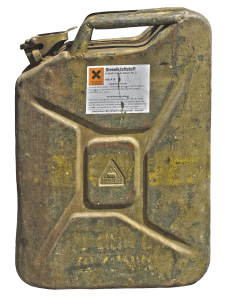
This time the engine doesn’t start, so it’s unlikely to be hydraulic fluid. Moving the car forward and cranking over again, a second puddle instantly forms.

Where is it leaking from? Moving the car forward confirms the fluid is unlikely to be hydraulic. I’m completely lost as to what it can be. The mystery fluid doesn’t really smell like petrol, and it appears to be brown. Getting out of the car and it doesn’t take too long to find the cause of the smell. It’s not immediately apparent as a petrol smell, certainly oily. The puddle of fluid is not immediately apparent as a fuel leakĪ strong odour passes by, which instantly has me concerned. However, I don’t get the chance to raise the suspension, as the engine stalls within seconds. I only need to move it around the drive, so the burning hot leather should be tolerable. I expect the battery charge to be low, so I’m pleasantly surprised when the car starts the first time. The wrong day for a fuel leakĪlthough the weather in the UK is hitting a record-breaking 40c, this is the only day I have to look at the car.

But when I come to move the car, disaster strikes in the form of a massive fuel leak. However, it is just 11 days until Festival of the Unexceptional 2022, so I need to investigate the front-end leak. Recently the weather has been rather warm, so the air con in the Freelander has been rather tempting. The car has developed a growing leak from somewhere in the front, and long work days have meant a lack of time to investigate. The approach is compared to two previous analyses of complex motion predicates in other languages which appeal to a non-standard formal mechanism to model complex predicates.My Citroen BX 16Valve has been taking a little rest of late. The formal analysis of Barayin SVCs in Lexical-Functional Grammar in Part C uses recent developments in the theory to show how argument sharing in SVCs can be represented in a connected s-structure that conforms to the standard mechanisms of LFG. The motion is normally (but not always) understood to take place prior to the activity or state predicated by the main verb. The most common type of SVC in Barayin involves a deictic motion verb. These chapters contribute to our knowledge of the world’s languages by documenting a complex syntactic phenomenon in an area of the world where most of the languages are significantly understudied.
PREPO FUEL CANISTER SERIAL
Part B of the dissertation gives a detailed description of the morphology, syntax and semantics of serial verb constructions in Barayin. Part A of this dissertation describes these problematic features in detail, providing a succinct overview of the literature which can serve as a resource for field linguists describing similar constructions. Typologically, serial verb constructions are problematic because they represent a heterogeneous set of multiverb constructions that have features that do not fit into traditional syntactic categories like subordination, conjunction and adjunction. This dissertation examines a particular type of syntactic construction in the language, serial verb constructions, from the perspectives of typological (or comparative) syntax, descriptive grammar, and the formal syntactic theory of Lexical-Functional Grammar (LFG). Barayin is an East Chadic language spoken by around 5000 people in the Guera region of the Republic of Chad.


 0 kommentar(er)
0 kommentar(er)
